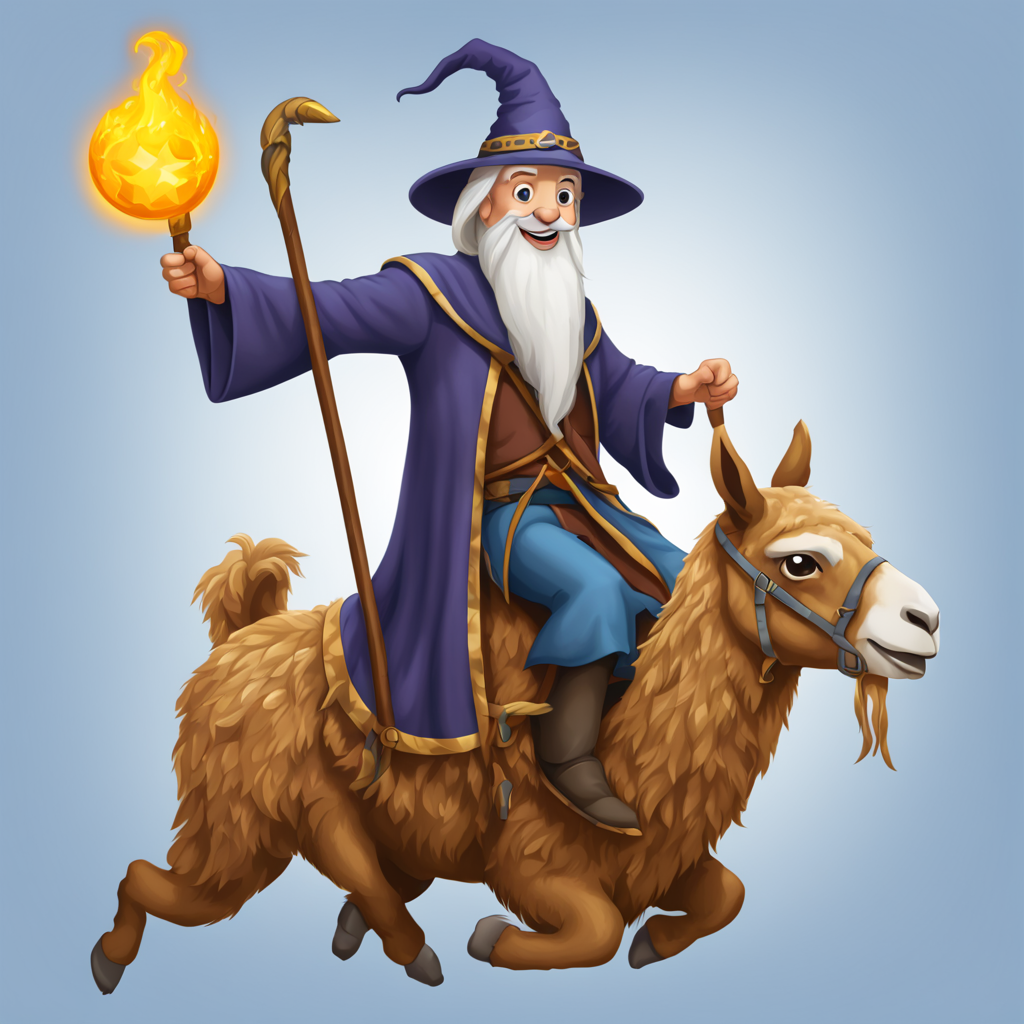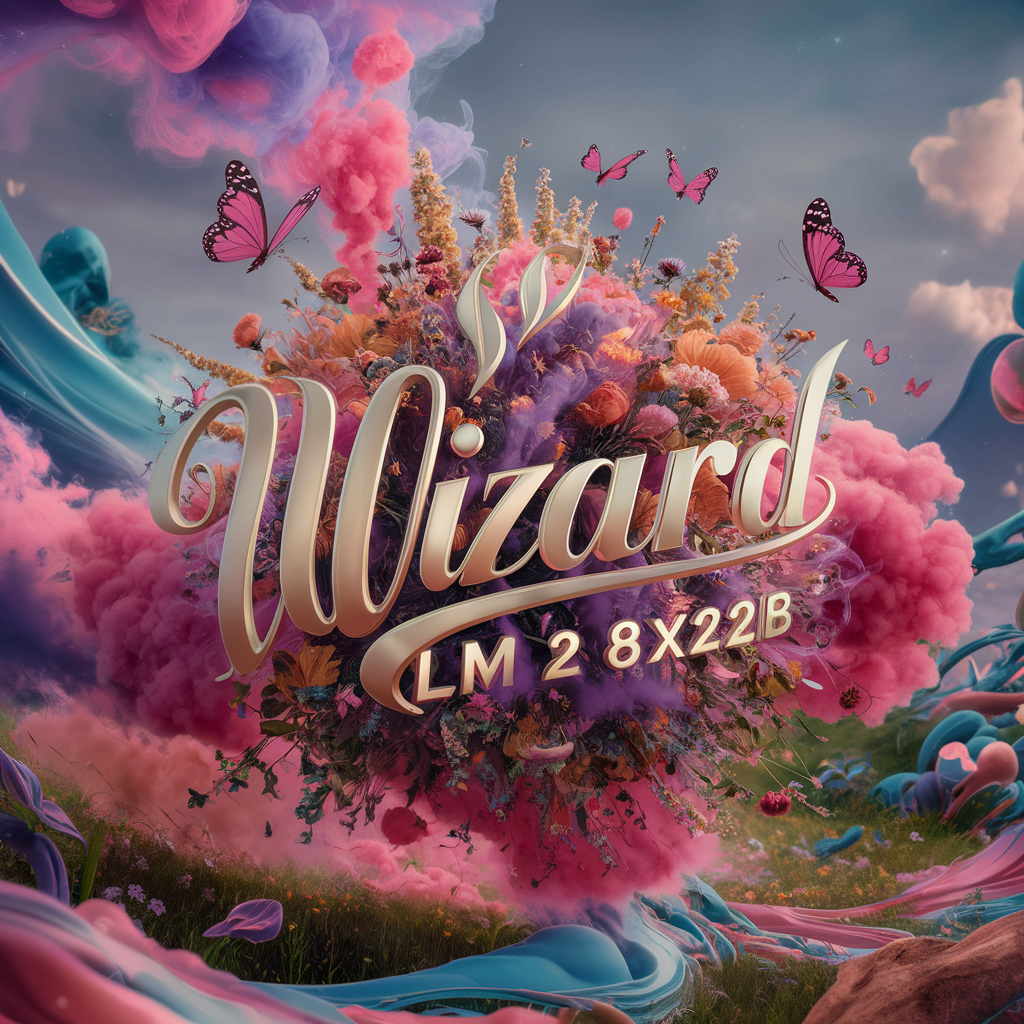wizard-mega-13b-awq
Maintainer: nateraw

5

| Property | Value |
|---|---|
| Run this model | Run on Replicate |
| API spec | View on Replicate |
| Github link | View on Github |
| Paper link | No paper link provided |
Create account to get full access
Model overview
wizard-mega-13b-awq is a large language model (LLM) developed by nateraw that has been quantized using Adaptive Weight Quantization (AWQ) and served with vLLM. It is similar in capabilities to other LLMs like nous-hermes-llama2-awq, wizardlm-2-8x22b, and whisper-large-v3. These models can be used for a variety of language-based tasks such as text generation, question answering, and language translation.
Model inputs and outputs
wizard-mega-13b-awq takes in a text prompt and generates additional text based on that prompt. The model allows you to control various parameters like the "top k" and "top p" values, temperature, and the maximum number of new tokens to generate. The output is a string of generated text.
Inputs
- message: The text prompt to be used as input for the model.
- max_new_tokens: The maximum number of tokens the model should generate as output.
- temperature: The value used to modulate the next token probabilities.
- top_p: A probability threshold for generating the output. If < 1.0, only keep the top tokens with cumulative probability >= top_p (nucleus filtering).
- top_k: The number of highest probability tokens to consider for generating the output. If > 0, only keep the top k tokens with highest probability (top-k filtering).
- presence_penalty: The presence penalty.
Outputs
- Output: The generated text output from the model.
Capabilities
wizard-mega-13b-awq is a powerful language model that can be used for a variety of tasks. It can generate coherent and contextually-appropriate text, answer questions, and even engage in open-ended conversations. The model has been trained on a vast amount of text data, giving it a broad knowledge base that it can draw upon.
What can I use it for?
wizard-mega-13b-awq can be used for a wide range of applications, such as:
- Content generation: The model can be used to generate articles, stories, or other types of written content.
- Chatbots and virtual assistants: The model can be used to power conversational AI agents that can engage in natural language interactions.
- Language translation: The model can be fine-tuned for translation tasks, allowing it to translate text between different languages.
- Question answering: The model can be used to answer questions on a variety of topics, drawing upon its broad knowledge base.
Things to try
One interesting thing to try with wizard-mega-13b-awq is to experiment with the different input parameters, such as temperature and top-k/top-p values. Adjusting these can result in significantly different output styles, from more creative and diverse to more conservative and coherent. You can also try prompting the model with open-ended questions or tasks and see how it responds, as this can reveal interesting insights about its capabilities and limitations.
This summary was produced with help from an AI and may contain inaccuracies - check out the links to read the original source documents!
Related Models
⚙️
nous-hermes-llama2-awq

7
nous-hermes-llama2-awq is a language model based on the Llama 2 architecture, developed by nateraw. It is a "vLLM" (virtualized Large Language Model) version of the Nous Hermes Llama2-AWQ model, providing an open source and customizable interface for using the model. The model is similar to other Llama-based models like the llama-2-7b, nous-hermes-2-solar-10.7b, meta-llama-3-70b, and goliath-120b, which are large language models with a range of capabilities. Model inputs and outputs The nous-hermes-llama2-awq model takes a prompt as input and generates text as output. The prompt is used to guide the model's generation, and the model outputs a sequence of text based on the prompt. Inputs Prompt**: The text that is used to initiate the model's generation. Top K**: The number of highest probability tokens to consider for generating the output. Top P**: A probability threshold for generating the output, where only the top tokens with cumulative probability above this threshold are considered. Temperature**: A value used to modulate the next token probabilities, controlling the creativity and randomness of the output. Max New Tokens**: The maximum number of tokens the model should generate as output. Prompt Template**: A template used to format the prompt, with a {prompt} placeholder for the input prompt. Presence Penalty**: A penalty applied to tokens that have already appeared in the output, to encourage diversity. Frequency Penalty**: A penalty applied to tokens based on their frequency in the output, to discourage repetition. Outputs The model outputs a sequence of text, with each element in the output array representing a generated token. Capabilities The nous-hermes-llama2-awq model is a powerful language model capable of generating human-like text across a wide range of domains. It can be used for tasks such as text generation, dialogue, and summarization, among others. The model's performance can be fine-tuned for specific use cases by adjusting the input parameters. What can I use it for? The nous-hermes-llama2-awq model can be useful for a variety of applications, such as: Content Generation**: Generating articles, stories, or other textual content. The model's ability to generate coherent and contextual text can be leveraged for tasks like creative writing, blog post generation, and more. Dialogue Systems**: Building chatbots and virtual assistants that can engage in natural conversations. The model's language understanding and generation capabilities make it well-suited for this task. Summarization**: Automatically summarizing long-form text, such as news articles or research papers, to extract the key points. Question Answering**: Providing answers to questions based on the provided prompt and the model's knowledge. Things to try Some interesting things to try with the nous-hermes-llama2-awq model include: Experimenting with different prompt templates and input parameters to see how they affect the model's output. Trying the model on a variety of tasks, such as generating product descriptions, writing poetry, or answering open-ended questions, to explore its versatility. Comparing the model's performance to other similar language models, such as the ones mentioned in the "Model overview" section, to understand its relative strengths and weaknesses.
Updated Invalid Date

wizardcoder-15b-v1.0

2
The wizardcoder-15b-v1.0 is a large language model created by the Replicate user lucataco. It is a variant of the WizardLM family of models, which have shown impressive performance on tasks like code generation. While not much is known about the specific architecture or training process of this particular model, it is likely a powerful tool for a variety of natural language processing tasks. When compared to similar models like the wizardcoder-34b-v1.0, wizard-mega-13b-awq, wizardlm-2-8x22b, and WizardLM-13B-V1.0, the wizardcoder-15b-v1.0 appears to be a more compact and efficient version, while still maintaining strong capabilities. Its potential use cases and performance characteristics are not entirely clear from the available information. Model inputs and outputs Inputs prompt**: A text prompt that the model will use to generate a response. max_new_tokens**: The maximum number of new tokens the model will generate in response to the prompt. temperature**: A value that controls the randomness of the model's output, with lower values resulting in more focused and deterministic responses. Outputs output**: The text generated by the model in response to the input prompt. id**: A unique identifier for the model run. version**: The version of the model used. created_at**: The timestamp when the model run was initiated. started_at**: The timestamp when the model run started. completed_at**: The timestamp when the model run completed. logs**: The logs from the model run. error**: Any errors that occurred during the model run. status**: The status of the model run (e.g., "succeeded", "failed"). metrics**: Performance metrics for the model run, such as the prediction time. Capabilities The wizardcoder-15b-v1.0 model appears to be a capable code generation tool, as demonstrated by the example of generating a Python function to check if a number is prime. Its ability to produce coherent and relevant code snippets suggests it could be useful for tasks like software development, data analysis, and automation. What can I use it for? The wizardcoder-15b-v1.0 model could be a valuable tool for developers and data scientists looking to automate or streamline various tasks. For example, it could be integrated into an IDE to assist with code completion and generation, or used to generate boilerplate code for common programming tasks. Additionally, it could be employed in data analysis workflows to generate custom scripts and functions on demand. Things to try One interesting thing to try with the wizardcoder-15b-v1.0 model would be to explore its capabilities in generating more complex code, such as multi-function programs or algorithms that solve specific problems. It would also be worthwhile to experiment with different prompting strategies and temperature settings to see how they affect the model's outputs and performance.
Updated Invalid Date

wizardcoder-34b-v1.0

2
wizardcoder-34b-v1.0 is a recently developed variant of the Code Llama model by maintainer rhamnett that has achieved better scores than GPT-4 on the Human Eval benchmark. It builds upon the earlier StarCoder-15B and WizardLM-30B 1.0 models, incorporating the maintainer's "Evol-Instruct" fine-tuning method to further enhance the model's code generation capabilities. Model inputs and outputs wizardcoder-34b-v1.0 is a large language model that can be used for a variety of text generation tasks. The model takes in a text prompt as input and generates coherent and contextually relevant text as output. Inputs Prompt**: The text prompt that is used to condition the model's generation. N**: The number of output sequences to generate, between 1 and 5. Top P**: The percentage of the most likely tokens to sample from when generating text, between 0.01 and 1. Lower values ignore less likely tokens. Temperature**: Adjusts the randomness of the outputs, with higher values generating more diverse but less coherent text. Max Length**: The maximum number of tokens to generate, with a word generally consisting of 2-3 tokens. Repetition Penalty**: A penalty applied to repeated words in the generated text, with values greater than 1 discouraging repetition. Outputs Output**: An array of strings, where each string represents a generated output sequence. Capabilities The wizardcoder-34b-v1.0 model has demonstrated strong performance on the Human Eval benchmark, surpassing the capabilities of GPT-4 in this domain. This suggests that it is particularly well-suited for tasks involving code generation and manipulation, such as writing programs to solve specific problems, refactoring existing code, or generating new code based on natural language descriptions. What can I use it for? Given its capabilities in code-related tasks, wizardcoder-34b-v1.0 could be useful for a variety of software development and engineering applications. Potential use cases include: Automating the generation of boilerplate code or scaffolding for new projects Assisting developers in writing and debugging code by providing suggestions or completing partially written functions Generating example code or tutorials to help teach programming concepts Translating natural language descriptions of problems into working code solutions Things to try One interesting aspect of wizardcoder-34b-v1.0 is its ability to generate code that not only solves the given problem, but also adheres to best practices and coding conventions. Try providing the model with a variety of code-related prompts, such as "Write a Python function to sort a list in ascending order" or "Refactor this messy JavaScript code to be more readable and maintainable," and observe how the model responds. You may be surprised by the quality and thoughtfulness of the generated code. Another thing to explore is the model's robustness to edge cases and unexpected inputs. Try pushing the boundaries of the model by providing ambiguous, incomplete, or even adversarial prompts, and see how the model handles them. This can help you understand the model's limitations and identify areas for potential improvement.
Updated Invalid Date

wizardlm-2-8x22b

1
The wizardlm-2-8x22b is a large language model developed by Replicate, a company focused on making AI models accessible and usable. This model is related to other Replicate models like VoiceCraft, which enables zero-shot speech editing and text-to-speech, and Qwen1.5-110B, a transformer-based decoder-only language model. The wizardlm-2-8x22b is a powerful text generation model that can be used for a variety of tasks. Model inputs and outputs The wizardlm-2-8x22b model takes a text prompt as input and generates an output text sequence. The input prompt can be customized with various parameters, such as temperature, top-k, and top-p, to control the creativity and coherence of the generated text. The output is an array of text strings, which can be concatenated to form the full generated text. Inputs Prompt**: The initial text prompt to guide the model's generation. Temperature**: A float that controls the randomness of the sampling, with lower values making the model more deterministic and higher values making it more random. Top K**: An integer that controls the number of top tokens to consider during generation. Top P**: A float that controls the cumulative probability of the top tokens to consider. Outputs Generated Text**: An array of text strings representing the model's generated output. Capabilities The wizardlm-2-8x22b model is a powerful text generation model that can be used for a variety of tasks, such as creative writing, story generation, and dialogue systems. The model has been trained on a large corpus of text data and can generate coherent and contextually relevant text. It can also be fine-tuned on specific domains or tasks to improve its performance. What can I use it for? The wizardlm-2-8x22b model can be used for a variety of applications, such as creative writing, story generation, and dialogue systems. For example, you could use the model to generate creative short stories, develop interactive chatbots, or assist with content creation for various industries. Things to try One interesting aspect of the wizardlm-2-8x22b model is its ability to generate text with a high degree of coherence and context-awareness. You could experiment with different prompts and parameter settings to see how the model responds to different types of inputs, or try fine-tuning the model on a specific domain or task to improve its performance.
Updated Invalid Date